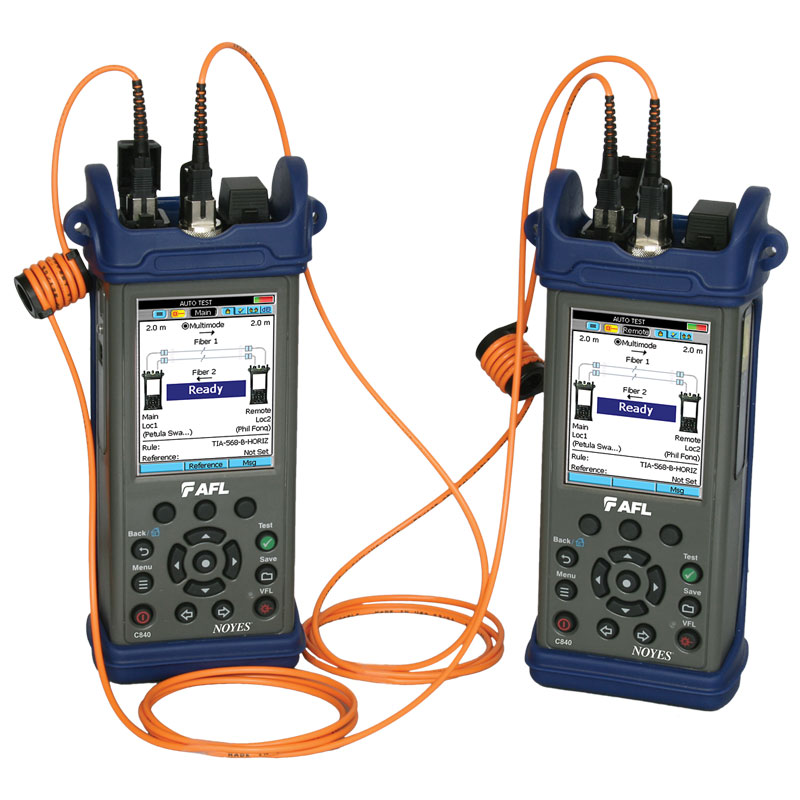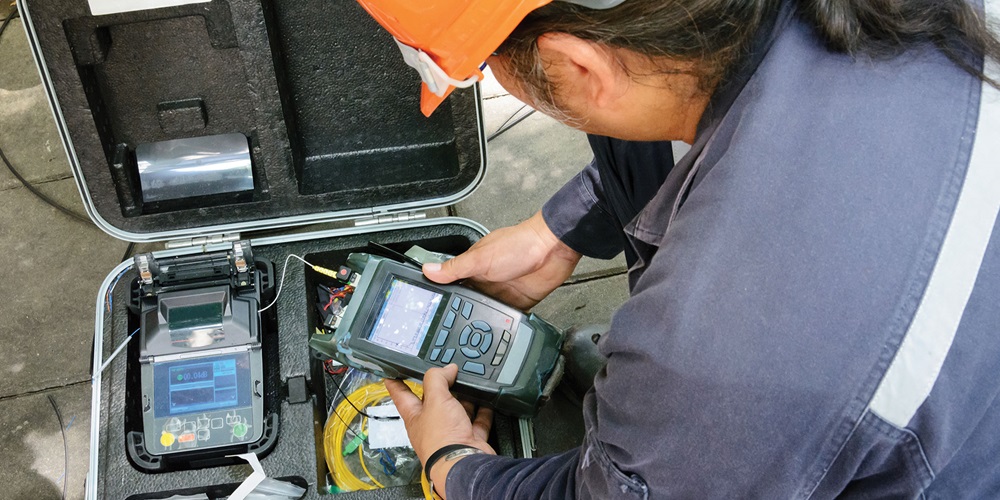The Role of Optical Fiber Screening in Ensuring Quality and Efficiency in Connection Solutions
In today's quickly developing electronic landscape, the value of optical fiber screening can not be overemphasized, as it acts as a foundation for ensuring the top quality and efficiency of connection options. By using a variety of screening approaches, consisting of OTDR and loss analyses, companies can proactively identify and reduce prospective network issues that might impede performance. Routine screening not just aligns with industry criteria however also paves the method for improved information transmission. Nevertheless, as technology remains to advance, the future of optical fibre testing postures fascinating difficulties and possibilities that merit closer evaluation.
Value of Optical Fibre Screening
The importance of optical fibre testing can not be overemphasized in making sure the integrity and efficiency of interaction networks. As the backbone of contemporary telecommunications, optical fibres help with high-speed information transmission, making their reliability critical to functional success. Testing works as an aggressive action to recognize potential concerns such as signal loss, attenuation, and physical damages, which can compromise network performance.
Normal screening enables the verification of installment quality and the discovery of issues that can affect information honesty - optical fibre testing equipment. By using rigorous screening methods, network operators can alleviate the dangers connected with network failings, consisting of downtime and monetary losses. Optical fiber testing makes sure conformity with sector criteria and regulations, improving the total top quality of solution offered to end-users.
Inevitably, the methodical assessment of optical fibres contributes to the durability and performance of interaction systems. It allows stakeholders to make educated choices concerning maintenance, upgrades, and troubleshooting. In a landscape where data is significantly essential, focusing on optical fiber screening is vital to maintaining robust and reliable connectivity options, consequently sustaining the needs of contemporary electronic settings.
Sorts Of Optical Fiber Tests
Numerous screening approaches are used to ensure the performance and reliability of optical fibers within communication networks. These tests can be generally classified right into 2 major kinds: setup tests and maintenance tests.
Setup tests are carried out quickly after the setup of optical fiber cable televisions to validate their efficiency and honesty - robotic vision. The most common setup examinations consist of Optical Time-Domain Reflectometry (OTDR) examinations, which analyze the top quality of the fibre by determining faults or breaks, and end-to-end loss examinations, which gauge the overall optical loss from one end of the fibre to the other
Upkeep tests, on the other hand, are done occasionally to guarantee ongoing efficiency and spot possible problems with time. These include aesthetic examination, which checks for physical problems or improper setups, and connection examinations, which verify that the signal can travel through the fiber without interruption.
Furthermore, advanced examinations such as Polarization Mode Diffusion (PMD) and Chromatic Dispersion (CD) examinations can be conducted to review the fiber's performance under different conditions. By employing these varied screening methods, professionals can preserve high criteria of high quality and integrity in optical fiber networks.
Advantages of Regular Testing
Routine testing of optical fibers plays an important duty in keeping the total performance and reliability of communication networks. By carrying out routine analyses, companies can ensure that their fibre optic installments satisfy industry standards and run successfully. This aggressive approach assists to recognize prospective weaknesses and deterioration gradually, enabling timely interventions before problems rise.

Cost-effectiveness is one more benefit. By resolving small issues early, companies can prevent the high expenses linked with major fixings or system failings. Regular testing likewise promotes compliance with regulatory requirements, making certain reference that the network abides by necessary safety and efficiency requirements.
Common Concerns Recognized
Recognizing common issues in optical fiber networks is vital for maintaining optimum performance and dependability. Numerous elements can add to disturbances, including physical damages, inadequate installment methods, and ecological impacts.
Physical damages, such as bends, breaks, or abrasions, can considerably weaken signal top quality. Incorrect installation strategies, including excessive stress or inadequate safeguarding of cable televisions, may lead to raised depletion and loss of connectivity. Furthermore, ecological variables such as temperature level variations, wetness ingress, and rodent disturbance can compromise the integrity of the fibre.
Adapter problems also frequently develop, with incorrect alignment or contamination bring about increased insertion loss. Splicing errors can introduce significant signal degradation if not performed with precision.

Attending to these typical problems through regular optical fiber testing not only enhances network reliability however additionally enhances total performance, making certain that connection solutions continue to be robust and reliable.
Future Trends in Testing
As the need for high-speed connectivity proceeds to increase, the future of optical fibre screening will progressively concentrate on automation and progressed analytics. The integration of synthetic knowledge (AI) and artificial intelligence (ML) in screening processes will make it possible for more reliable data analysis and anticipating maintenance, lowering downtime and boosting overall network reliability. Automated testing options will improve the examination and accreditation of fiber networks, lessening human mistake and increasing testing throughput.
Another considerable pattern is the fostering of remote screening technologies. As the deployment of fibre networks increases right into remote and underserved locations, remote testing abilities will certainly enable specialists to keep an eye on and identify network conditions without physical visibility, consequently lowering functional prices and enhancing feedback times.
Moreover, there will certainly be a Check Out Your URL shift in the direction of even more detailed testing standards that incorporate not only standard loss dimensions but likewise performance metrics such as latency and bandwidth usage. This alternative approach will certainly facilitate far better network administration and optimization techniques.
As these trends progress, the optical fiber screening landscape will certainly not only enhance the quality and efficiency of connectivity options however also sustain the growing intricacies you can check here of contemporary communication networks.
Verdict
Finally, optical fiber testing acts as a basic element in preserving the integrity and performance of interaction networks. By systematically assessing different criteria through developed testing techniques, possible problems are recognized and remedied, guaranteeing optimum efficiency. The ongoing dedication to normal screening not only enhances data transmission however likewise lines up with industry standards, cultivating reliability in network frameworks. As innovation advances, the significance of innovative testing techniques will certainly proceed to grow, further advancing connectivity services.
Comments on “Optical fibre testing equipment maintains precision in fibre network installations.”